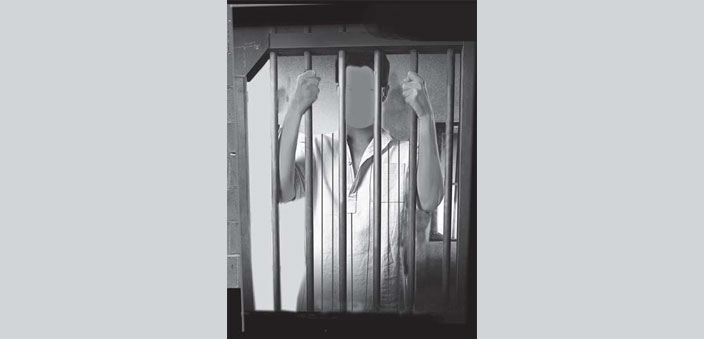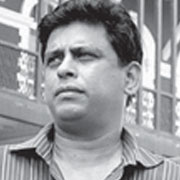Post 9/11, in the background of the American led “war on terror”, States throughout the world started viewing people’s movements as a threat to their security. It became imperative that such movements be crushed, organisations be banned, opinions be criminalised and social activists be branded as terrorists. India too, promulgated the Prevention of Terrorism Ordinance (POTO) which was soon enacted (as POTA). The radical left or Maoist movement was also developing into a formidable force in central India. The then PM Manmohan Singh was quick to respond and assert how Naxalism was India’s biggest internal threat.
This was the background of my arrest on May 8 2007 at Nagpur. I was waiting to meet some social activists when around 15 men surrounded me. I was bundled into a car; blind folded, kicked and punched while the car drove away at high speed. I had been detained by hefty men in civil dress who whilst repeatedly bashing me also threatened to kill me in a false encounter, or extra-judicial execution. Around midnight on the very same day, I was formally informed that I had been arrested by the Nagpur police.
My ordeal had just begun. I spent that night in a damp lock-up cell in the station with a hole in the ground that served as a urinal. I was served with a plastic bag consisting of dal and rotis, which were almost impossible to chew due to the swollen jaw I developed after the repeated punches on my face. The next morning I was woken up for another round of questioning. To make me more amenable to their interrogations, the police officers would stretch out my body completely. My arms were often tied to a window grill high above the ground while two policemen stood on my outstretched thighs to keep me pinned to the floor. All such torturous acts were calculated to cause maximum pain without leaving visible injuries. Despite these precautions, my ears started to bleed and my jaws began to swell. The next day, I would later learn, these images made the front pages of newspapers around the country. The press was told that I was the chief of communications and propaganda of the Maoist Party. When I was produced in the court, I was shown to be arrested with three others – Dhanendra Bhurule, a journalist; Naresh Bansod, the Gondia district president of the Maharashtra Andhashraddha Nirmulan Samiti; and Ashok Reddy, a former trade union organiser from Andhra Pradesh. We all were accused of hatching a plot to blow up the monument of Bhimrao Ambedkar at Deekshabhoomi in Nagpur and charged under provisions of the Unlawful Activities (Prevention) Act, 2004 (UAPA).
The Unlawful Activities Prevention Act, 1967 had been amended in 2004 and was made the principal anti-terror legislation by the Parliament due to a public outcry against the misuse of POTA. Earlier anti-terror laws like TADA and POTA had sunset clauses enabling them to lapse after a certain period. However, the new law did not have any such provision – it was enacted to be enforced permanently. Draconian chapters in POTA dealing with so-called terrorism were merely added to the newly amended UAPA. Like its predecessor, UAPA also allowed for the determination of guilt on the basis of ‘Association’ and ‘Ideology’- provisions that are inconsistent with existing constitutional freedoms of expression, ideology or association. The Act contains a list of organisations, deemed to be banned. The question whether a person is a member of such a banned organisation is determined by the articles he reads or the books he possesses. It translates to a criminalisation of an ‘Ideology’. The other aspect of determination of guilt is by ‘Association’. Existing law allows for ‘abettors’ and ‘conspirators’ of an offence to be made culpable. However, UAPA further stretches this interpretation of who is an abettor or co-conspirator by mere association. Thus those booked under UAPA find themselves slapped with these charges, without concrete grounds of them being involved in a specific offence or an act of violence. Such determination of prima facie guilt is even more dangerous as it causes a person to be detained for years on end. A week after my arrest, pediatrician and human rights activist, Binayak Sen was arrested in Raipur under this same legislation.
The cycle of torture sessions
In police custody, every morning, the four of us would be transported to the Police Gymkhana for interrogation sessions that lasted late into the night. The torture techniques varied in intensity. I would be kept awake for almost 36 hours at a stretch or made to stand for long periods with my arms raised by my side, parallel to the ground. At times, a group of constables would descend and force me to sit on the floor with my back against the wall. Both my legs would then be forced wide apart and a cop would stand on my thighs so that I couldn’t bend them. All this resulted in immense pressure on my torso and groin. Sometimes my interrogators would pinch me or pull my hair or pierce the skin under my nails with pins. The pain of the piercing, forced positions, stretches, hair pulling and the like would be sharp and intense. This cycle of torture sessions would continue for hours, until finally I’d collapse on my back from exhaustion.
My first brush with social activism began as a student at St. Xavier’s College, Mumbai in the early 1990s. I had organised camps in villages and welfare projects for the underprivileged. Through such camps I became exposed to the harsh realities of India and the inequality in power relations between rich and poor. The communal riots of 1992-1993, the demands of the urban poor to the right to housing, exploitation of workers, all fired my imagination to work for the poor and the under privileged. I joined one such revolutionary student organisation, the Vidyarthi Pragati Sanghatana (VPS), which had branches in several colleges. While in the VPS, I had the opportunity to meet with youth from diverse backgrounds, especially from the working class and lower castes. Many of them inspired me with their talent and zeal to change society. We organised many struggles against fee-hikes and against a proposed University Bill that would do away with elections to student unions and select representatives based on academic merit. We organised annual ‘go-to-the-villages’ campaigns in Nashik, Ratnagiri and Gujarat. After college I joined the Naujawan Bharat Sabha, an organisation which was at that time organising slum-dwellers to resist the eviction drives of the municipality. Looking at all these struggles up close made me aware of the true potential of peoples’ movements as agencies of change. These struggles showed me how the state was the principal tool of oppression. The violence it perpetrated crushed any dissent of the masses. Those of us Marxists who worked to organise tribals or the oppressed were easily labeled as left-wing extremists. While some were eliminated in false encounters, others like me were arrested under UAPA, tortured, implicated in false cases with fabricated evidence, to be locked away in prison for several years.
Here the lathi and violence rules
The days spent in Nagpur Central Prison exposed me to the underbelly of the criminal justice system. Like the prisons throughout the country, the Maharashtra prisons too face a chronic problem of overcrowding. Though official figures of occupancy rate released by the government in Maharashtra prisons mention marginal overcrowding, in reality, prisons and barracks are occupied to more than twice and sometimes almost thrice their capacity. The problem of overcrowding does not merely affect a particular inmate regarding his space in prison, but also overloads existing facilities of water, latrines, sanitation, ventilation, etc. Night latrines and water storage facilities in barracks regularly cause foul odour to dominate the air throughout the day. Water supply in barracks for the purpose of drinking and latrines become highly inadequate. Such unhygienic conditions become fertile ground for water and air borne contagious diseases. Due to corruption, pilferage and inhumane timings, the quality of food provided by the prison administration is often substandard and unfit for consumption.
In prison, timely and adequate medical treatment of prisoners is an extremely important issue. First, prisoners do not enjoy access to medical expertise that free citizens have and secondly, because of conditions of incarceration, inmates are exposed to more health hazards than ordinary citizens are. However, prison administration pays lip-service to the formality of ensuring medical treatment. Another problem is the irregularity or sometimes absence of production of an undertrial before his trial court. Inability to do so constitutes a serious violation of his Civil Rights and may prove detrimental to his defense and stay in prison. However, in practice, on the pretext of insufficient guards, many under trials are not produced before the courts.
However the biggest problem the Indian Prison faces is its dependency on violence as a method of administration. From the moment of entry into prison, an inmate is faced with abuse and aggression. He is coerced and compelled to ‘accustomise’ himself to the inhuman prison conditions of overcrowding, substandard food, shortage of water, etc., by threat of the lathi. Daily floggings of prisoners by the staff is the established practice for successful prison administration. In such a culture of submission and violence, attempts to patiently persuade, counsel and reform prisoners are absent.
By 2008, a total of nine cases under UAPA were slapped on me – one in Nagpur, six in Gondia, one in Chandrapur and a case of attempting to commit suicide for participating in a 27- day hunger strike while in prison. After being denied bail, I was left with no other option but to remain in prison until I would be absolved of all these cases. It took almost four years for all the Gondia and Nagpur cases to be done with. While acquitting me, the judge had concluded in almost all the Gondia cases that there was “absolutely no evidence against the accused” and that the prosecution had “miserably failed to prove guilt of accused beyond reasonable doubt”. The last Chandrapur case concluded with my acquittal in September 2011. However on the morning of 27 September, just as I stepped out of the prison gate, I was abducted by police personnel in civil dress and dumped into an unnumbered vehicle. My mother, brother and advocates, who had come to receive me, were pushed away by the authorities. After about three hours, I was taken to a police station in Gadchiroli where the police showed me rearrested in two more cases related to Naxalite attacks in 2007. I was once again produced before a magistrate, who sent me back to the Nagpur prison.
The walk to freedom
Despite my disappointment, my re-arrest in 2011 had a silver lining. I became the face of an unjust system. It brought the issue of my incarceration back into focus. Family, friends, media persons and civil rights activists who campaigned for my release started receiving overwhelming support. This time I was luckier. I was soon acquitted in one of the two rearrested cases and granted bail in the other. On 4 January 2012, I once again walked out of prison doubting whether another re-arrest awaited me. However this time finally, after 4 years and 8 months, I walked out of the prison to freedom. The last and final case took another two years for completion and acquittal in January 2014.


